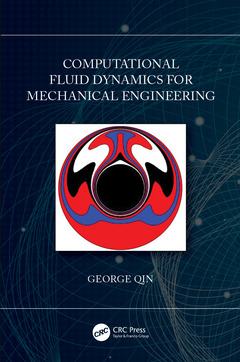Description
Computational Fluid Dynamics for Mechanical Engineering
Author: Qin George
Language: English
Subjects for Computational Fluid Dynamics for Mechanical Engineering:
Keywords
Fluid dynamics, microfluidics, fluid-particle dynamics, CFD, Non-Newtonian fluid mechanics, surface coating, Incompressible flow, entropy generation, Fluid-particle dynamics, microfluidics, fluid-structure interactions, Finite element analysis, turbulence, lubrication, Nanoscale fluid mechanics, Finite Difference Method, Finite Difference Equations, Virtual Nodes, Lid Driven Cavity Flow, Time Averaged Velocity Distribution, Momentum Interpolation Method, Control Volumes, Laminar Channel Flow, Gauss Seidel Iteration Methods, Interior Point Solution, Truncation Error, Gauss Seidel Method, Duct Flow, Unstructured Mesh, LU Decomposition Method, Finite Volume Method, Simple Procedure, CG Method, Turbulent Channel Flow, Triangular Mesh, Rectangular Control Volume, Incompressible Flow Simulations, Navier Stokes Equations, Eddy Viscosity, Sip
· 15.6x23.4 cm · Hardback
Description
/li>Contents
/li>Readership
/li>Biography
/li>
This textbook presents the basic methods, numerical schemes, and algorithms of computational fluid dynamics (CFD). Readers will learn to compose MATLAB® programs to solve realistic fluid flow problems.
Newer research results on the stability and boundedness of various numerical schemes are incorporated. The book emphasizes large eddy simulation (LES) in the chapter on turbulent flow simulation besides the two-equation models. Volume of fraction (VOF) and level-set methods are the focus of the chapter on two-phase flows.
The textbook was written for a first course in computational fluid dynamics (CFD) taken by undergraduate students in a Mechanical Engineering major.
Access the Support Materials: https://www.routledge.com/9780367687298.
Chapter 1 Essence of Fluid Dynamics Chapter 2 Finite Difference and Finite Volume Methods Chapter 3 Numerical Schemes Chapter 4 Numerical Algorithms Chapter 5 Navier–Stokes Solution Methods Chapter 6 Unstructured Mesh Chapter 7 Multiphase Flow Chapter 8 Turbulent Flow
Dr. George (Zhaohui) Qin is currently an associate professor in the School of Engineering and Computer Science of Cedarville University at Cedarville, Ohio. George obtained his B.S. and M.S. degrees in Mechanical Engineering from Shanghai Jiaotong University of China. He carried out research on large eddy simulation (LES) of turbulent flows in rotating ducts under supervision of Dr. Richard Pletcher of Iowa State University for his Ph.D. degree. Upon receiving his degree in 2007, George began to work as a lecturer and post-doc research fellow in Iowa State University. He moved to Cedarville University in 2012. George teaches and researches in the general thermal-fluids area including Thermodynamics, Fluid Mechanics, Heat Transfer, Computational Fluid Dynamics, and Turbulent Flows.




